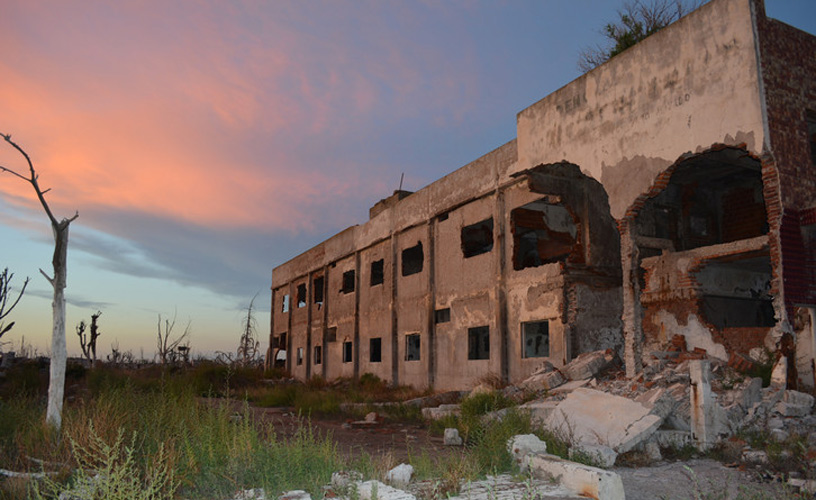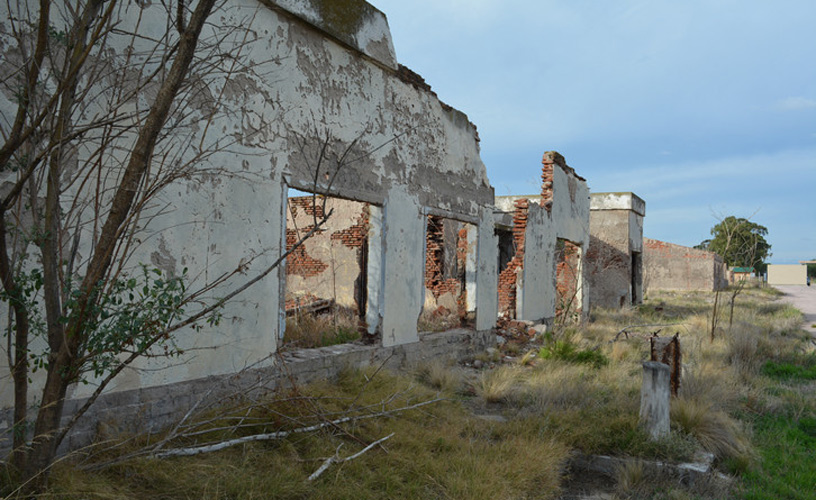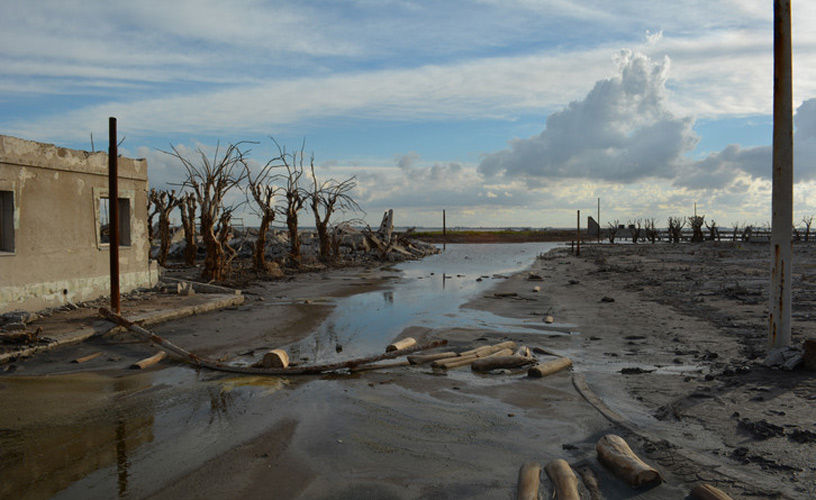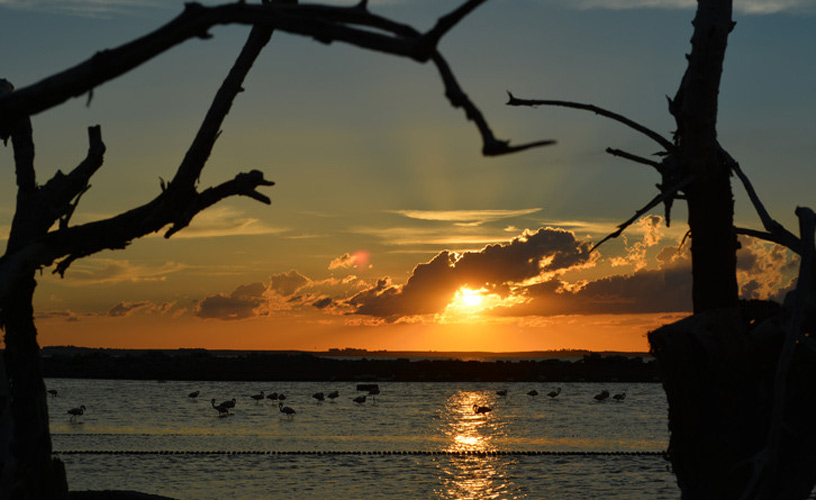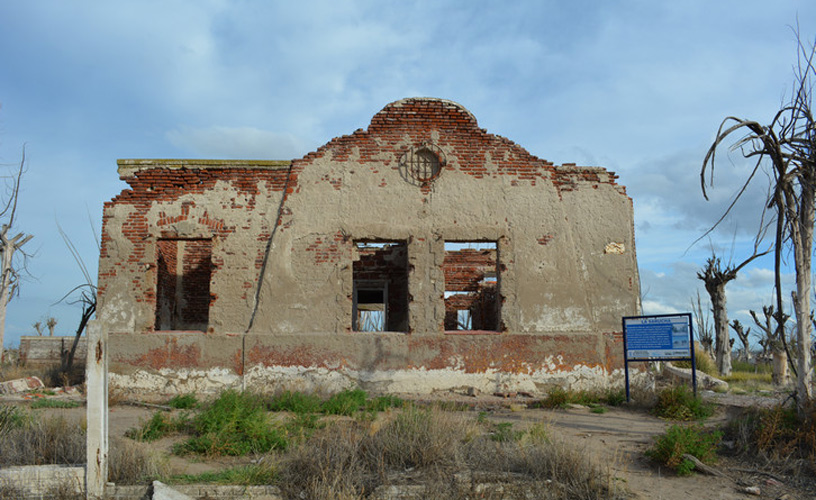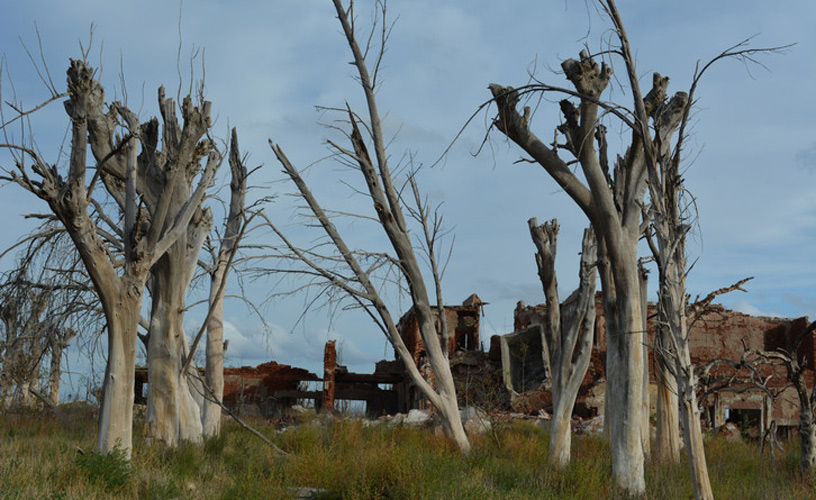Submerged for years, the partial recession of the waters turned Villa Lago Epecuén into a new tourist circuit. Postcards from a strange and fascinating landscape.
Dry trees still standing and empty houses are the only things to appear on the uniform surface of the water body. This is what is still seen from once booming Villa Epecuén: a town that should be abandoned overnight due to the advance of the lake waters.
As we left Carhué, we saw a line of white trees that outlines what used to be Colón Avenue, today submerged under the brackish waters. This was an omen of what we would see of the flooded village, our following destination, lying just twelve kilometers away.
In the Streets: the Water
We approached the first blocks of the village and the streets continued as water avenues among the submerged waters. Leafy plants grew from the ruined walls and roofs as a demonstration of how ephemeral the work of man can be in front of nature.
On what used to be Alvear Street, the parking lot of the old bus station seems to be waiting for the return of the thousands of tourists that crowded the bathing resorts. They would visit the hot spring resorts and stay at luxurious hotels such as the Venecia, whose ruins are now seen just one block away from the former bus terminal.
Since the 1930s, more and more visitors began to arrive in this area lured by the waters that relieved rheumatic pains, arthritis and skin disorders. Between 1960 and 1970, Villa Epecuén had 5,000 beds and hundreds of stores and it would welcome over 25,000 tourists per season. But soon the dream of the whole town would be covered by the waters.
Empty Hotels and Silent Bells
Next to the shore crowned with saltpetrous foam, our guide marked one spot in the lake. He said that the ruins of Saint Teresita Chapel lied four meters underneath. Its large bell was rescued by a group of SCUBA diving firemen in 1991. Today, it is displayed in the parish of Carhué, already mute, after having been tolled at Villa Epecuén for over 50 years.
Many of the hotels and important buildings today in ruins may be appreciated in its entire splendor in the old photographs of the village displayed in Carhué. This is not the case of the ancient railway station: built on higher ground, it has remained intact when the waters advanced.
Final recipient of an interconnected group of ponds called Southwestern Chained Pond System, the Epecuén would increase or decrease its size in cycles, according to variations in the rainfall regime.
In 1978, hydraulic works were started to overcome this variation and to supply the tourist village with a constant volume of water. As a result of these works, in 1985 the lake overflowed the embankment and covered more than half the town.
Today, the ruined houses, the dead trees still standing and the ghostly hotels of Villa Lago Epecuén represent an unusual tourist attraction. It is fascinating and moving at the same time. But life always gives a second chance.
Carhué, the largest thermal city in the Province of Buenos Aires, is getting nicer and nicer, with a history and a future that grow more and more prodigious.
Pablo Etchevers
Gentileza Conocelaprovincia.com.ar
